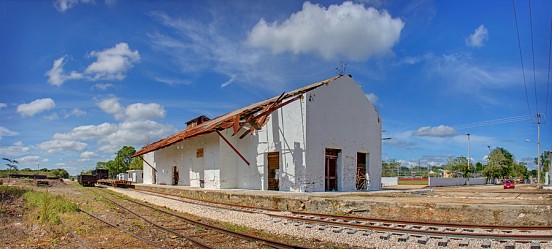
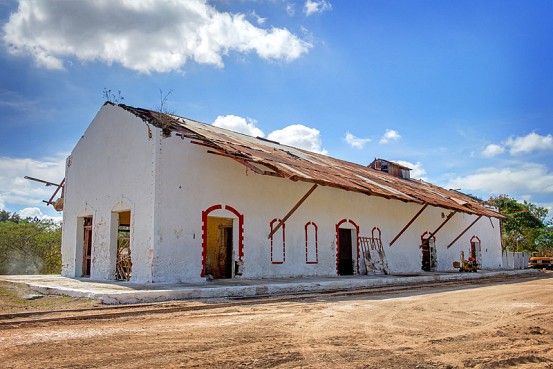 Â
 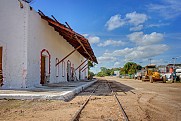 Â
 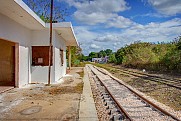 Â
 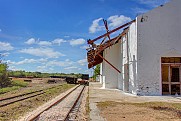 Â
 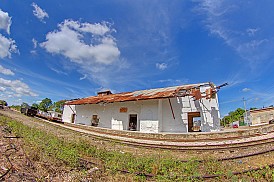 Â
 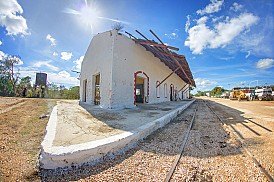 Â
 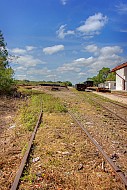 Â
 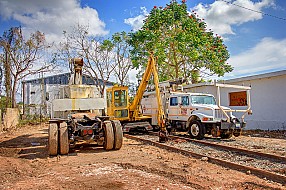 Â
 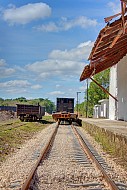 Â
 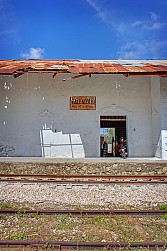 Â
 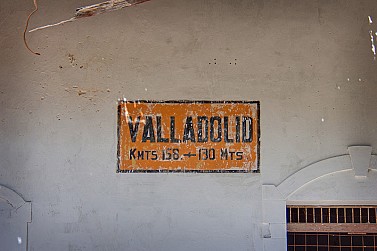 Â
 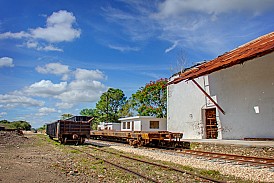 Â
 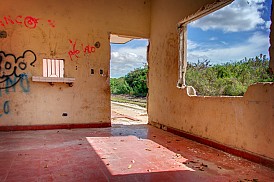 Â
Â
Now when I said that passenger service was long gone, I’m referring to regular service. Several years ago there were in fact tourist tour trains that operated along the line, and south from Mérida to Campeche – the Maya Express. Consisting of four coaches with seating for 64 passengers each, along with a club car, the train was not quite luxury, but definitely upscale. Unfortunately, the Maya Express ceased operations in 2011, and the equipment was sold off. Though the train was certainly a nice idea, a good number of the area’s tourists come from the Cancún area, which was quite separated from these trains. A rail system that tapped into that market would certainly get plenty of passengers, which brings us to a proposal for high speed rail on the peninsula…
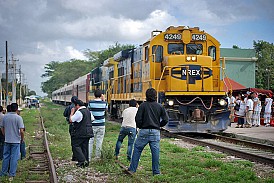 Â
 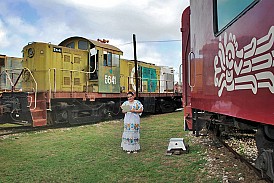
The defunct Maya Express passenger train. Photos by Erick Pavel Gutierrez.
A proposed plan for establishing a high-speed rail system across the peninsula was first announced in 2012 by incoming Mexican president Enrique Peña Nieto. Early in his presidency, Peña Nieto detailed a list of 13 actions the government should take to benefit the country – one of which was the return of passenger trains. The Metro in Monterrey, and the light rail in Guadalajara would be expanded, and two high-speed rail networks would be established. One would connect Mexico City to Queretaro, and the other would connect the states of Yucatán and Quintana Roo on the Yucatán Peninsula. Although many hoped work for Trans-Peninsular project would begin in 2014, it is likely being delayed until at least 2018, when Peña Nieto’s six year term is complete, leaving decisions regarding the plan for the newly elected president.
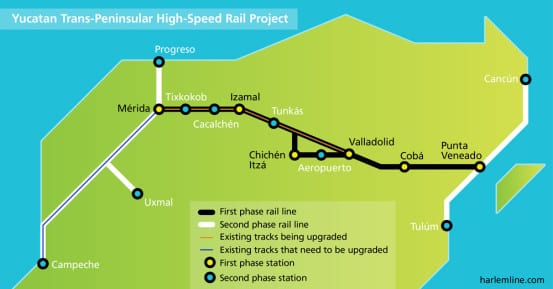
Map of the proposed high speed rail line. Note that it consists of existing trackage, and tracks that would have to be installed. Existing trackage would need to be updated for high speed use.
The Trans-Peninsular project plan consisted of two phases – the first called for new tracks to be constructed from Valladolid to Punta Veneado on the coast, which is about halfway in between Cancún and Tulum. Existing tracks from Mérida to Valladolid would also be upgraded to accommodate higher speeds. A small spur line connecting Chichén Itzá to the existing rail would also be added. In the second phase of the plan, a line would be constructed from Cancún to Tulum, connecting with the first phase at Punta Veneado, and the already existing tracks from Campeche to Mérida would be upgraded for high speed. Spurs to Uxmal and Progreso would also be added.
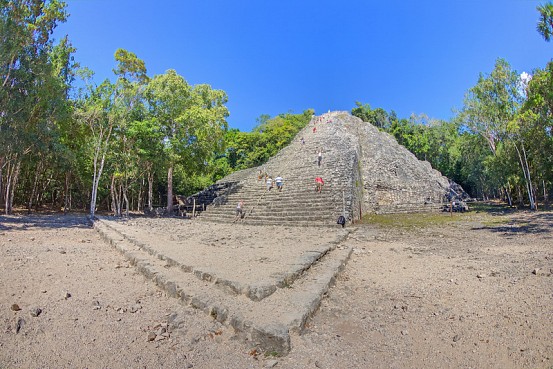
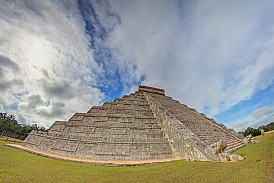 Â
 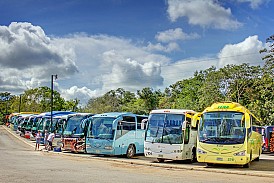
Top: The ruins at Cobá, generally considered “off the beaten track,” would be connected in the proposed Trans-Peninsular High-Speed Rail plan. Bottom Left: Chichén Itzá, perhaps Mexico’s most well-known ruins, would be on a special spur of the proposed rail line. Bottom right: Buses line up at the popular Chichén Itzá. Trains would add a new, potentially quicker, method of transport to the ruins.
Conceptually, the plan is a good one – it supplements the already existing freight railroad, and gives it sea access on all three sides of the peninsula. For passengers, it connects some major tourist centers on the coast, namely Cancún’s International Airport, to almost all of the major archaeological parks – Chichén Itzá, Cobá, Tulum, and even the far off Uxmal. Undoubtedly it would shake up the local tour industry, which is established on buses, which are often quite slow. And it would certainly give tourists the ability to completely eschew the tours and journey themselves without the hassle.
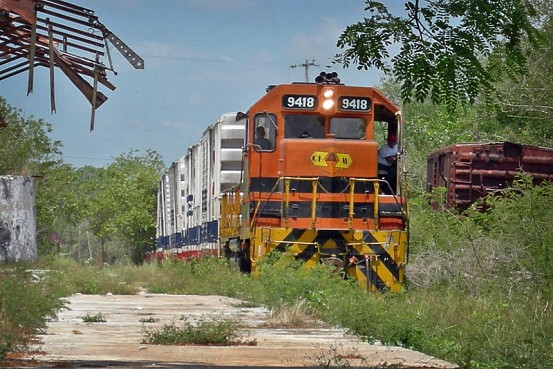
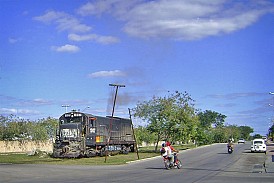 Â
 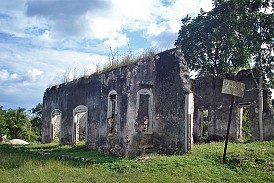
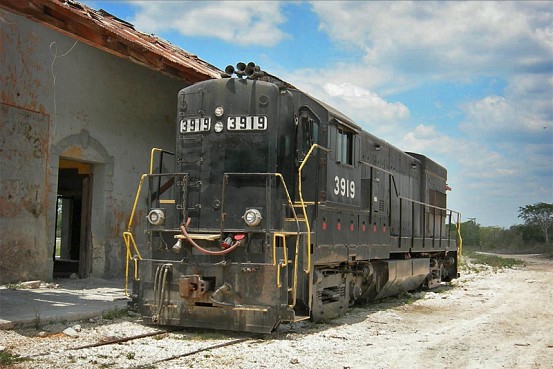
Freight along the Merida – Valladolid line:
Top: A Chiapas-Mayab train along the Mérida-Valladolid line, photo by Dominique de Champeaux.
Middle left: A train operates alongside a road in Mérida, photo by Raymundo Tziu Cuxim. Middle right: The crumbling former station at Uayma, photo by Ferrobeto.
Bottom: An ex-Southern locomotive next to Valladolid station photo by Dominique de Champeaux.
Despite the lack of any concrete decisions about the plan, just outside the abandoned Valladolid station visitors can see work crews toiling along the tracks. Newly installed concrete ties provide a stark contrast to the abandoned building right next to it. At minimum, the tracks from Mérida to Valladolid are being upgraded to at least allow higher speeds for the existing freight traffic. Whether the rest of the plan begins in earnest remains to be seen…


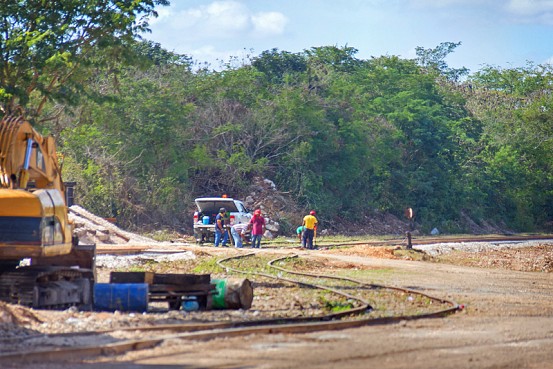
can’t bear to read the whole articular, road those train’s back in the eary 90’s back when it was all natives riding.
Anyone know what the latest situation is with this Yucatan Railroad and is it currently operating
I rode this line too, is the early 90s. Almost all Maya on board as you say. At night, the cars were dark – no electric lights in cars, so as we passed through the towns, occasional intervals of light would come from open fires people had gathered around near the tracks.